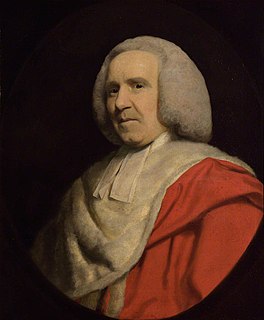
John Venn, FRS, FSA was an English mathematician, logician and philosopher noted for introducing the Venn diagram, used in the fields of set theory, probability, logic, statistics, competition mathematics, and computer science. In 1866, Venn published The Logic of Chance, a ground-breaking book which espoused the frequency theory of probability, offering that probability should be determined by how often something is forecast to occur as opposed to “educated” assumptions. Venn then further developed George Boole's theories in the 1881 work Symbolic Logic, where he highlighted what would become known as Venn diagrams.

Charles Thorp, was an English churchman, rector of the parish of Ryton and, later, Archdeacon of Durham and the first warden of the University of Durham.
John King, 2nd Baron King, FRS was an English politician.

John SmithD.D. was a British academic and astronomer.

Sir William Ashburnham, 4th Baronet was a Church of England priest and also a baronet.

William Richardson (1698–1775) was an English academic and antiquary, Master of Emmanuel College, Cambridge from 1736.
William Thomas Parr Brymer was Archdeacon of Bath from his installation on 1 April 1840 until his death on 19 August 1852.
John Sheepshanks was a nineteenth century Archdeacon of Cornwall.
Thomas Kaye Bonney(b Tansor 20 June 1782 - d Normanton 7 April 1863) was Archdeacon of Leicester from 22 January 1831 until his death.
Richard Newcombe was an Anglican priest.
John Richardson Illingworth was an English Anglican priest, philosopher, and theologian. He was a notable member of the set of liberal Anglo-Catholic theologians based in Oxford, and he contributed two chapters to the influential Lux Mundi.

John Newcome, D.D. was an eighteenth century academic and priest, most notably Master of St John's College, Cambridge from 1735, and Dean of Rochester from 1744, holding both positions until his death.
Jaques Sterne was a cleric and politician in the mid 18th century. He was educated at Jesus College, Cambridge. He was ordained in 1720. He held livings at Rise and Hornsea. He was Archdeacon of Cleveland from 1735 until 1750; and then of East Riding from 1750 until 1755. His Alumni Cantabrigienses entry describes him as a
"A well known and eccentric figure in York- a violent Whig politician"

William Craven, D.D. was a priest and academic in the second half of the 18th and the first decades of the 19th centuries.

Robert Lambert, D.D. was a priest and academic in the second half of the 18th and the first decades of the 19th centuries.
William Buckenham was a 16th-century priest and academic.
William Towers , D.D. was a priest and academic in the eighteenth century.
Sir Edward Simpson, of Acton, Middlesex was an English politician, lawyer and academic.
Peter Stephen Godard, D.D. was Master of Clare College from 1762 until his death.
John Adams, D.D. was an academic in the eighteenth century.







